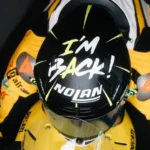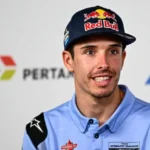Two Japanese manufacturers; Honda and Yamaha have entered class D of the newest MotoGP concession system since the start of the 2024 season. Yamaha has recruited several key human resources from Ducati and introduced many new improvements. The result? It was quite good to see several times that both Fabio Quartararo and Alex Rins were able to enter Q2 straight away, even though for a long race there was still a need for finishing touches to be polished. Honda also tries to develop its RC213V regularly, and does not hesitate to try new concepts, but until the 7th series in Italy, HRC seems to have maintained a relatively cautious approach in the motorbike development process. At least that is what his satellite racer, Takaaki Nakagami, said bluntly.
Nakagami estimates that it will still take a long time for Honda to recover, as long as the process that occurs at a race weekend where for example a new part needs to undergo a lot of confirmation before it can be used for a Grand Prix race. It seems that HRC is still reluctant to carry out large-scale changes and experiments in terms of this policy.

“I understand that you can easily say that there is a Japanese style, which means, even for screws, the parts have to be precise. [Engineers] have to understand the performance, and they’re careful. That’s why it takes a long time to develop and bring in new parts.” That’s how Nakagami explained via Motorsport Spain.
“Even though we are currently testing a lot of things, the quantity is not that important. If the racers say there are good ones, there are only [one or two units] at most, so we can’t use them [at race weekends]. It took a long time to decide, and once we decided which direction to take, it took time.”

“The good thing is that all four riders (Mir, Marini, Zarco & Nakagami) gave almost the same comments and requests when we had problems. I think for engineers it’s pretty clear what we have to improve to make progress. But in a week [we don’t have] completely different specifications. This takes time. It’s like a very careful Japanese style. , and performance comes later.”
In general, even though he uses a different point of view, Luca Marini also conveys the same thing regarding HRC’s development approach. “But you have to believe in the Japanese. Their methods were different compared to the Italian engineers, but they were very precise, very powerful. They want to understand everything very well. This is also part of their job. it’s a racer’s job to try to explain the problem and share comments in the best way possible. I think we have a very good relationship, and we are growing a lot together.”

“Their approach is they want to understand everything, and they want to make sure everything works before they take it to the track and maybe minimize the risk of it breaking and causing problems for the drivers. They just need the rider to explain everything very well and be able to understand the situation, and share his opinion as best as possible, explaining how he feels about the problem with the bike.”
[Opinion] Judging from what Nakagami and Marini said above, it appears that HRC does seem to have a kind of SOP in terms of feedback on motorbike development where all feedback is still accommodated, but it has not been made into the main variable of the grand strategy and direction of motorbike development.












